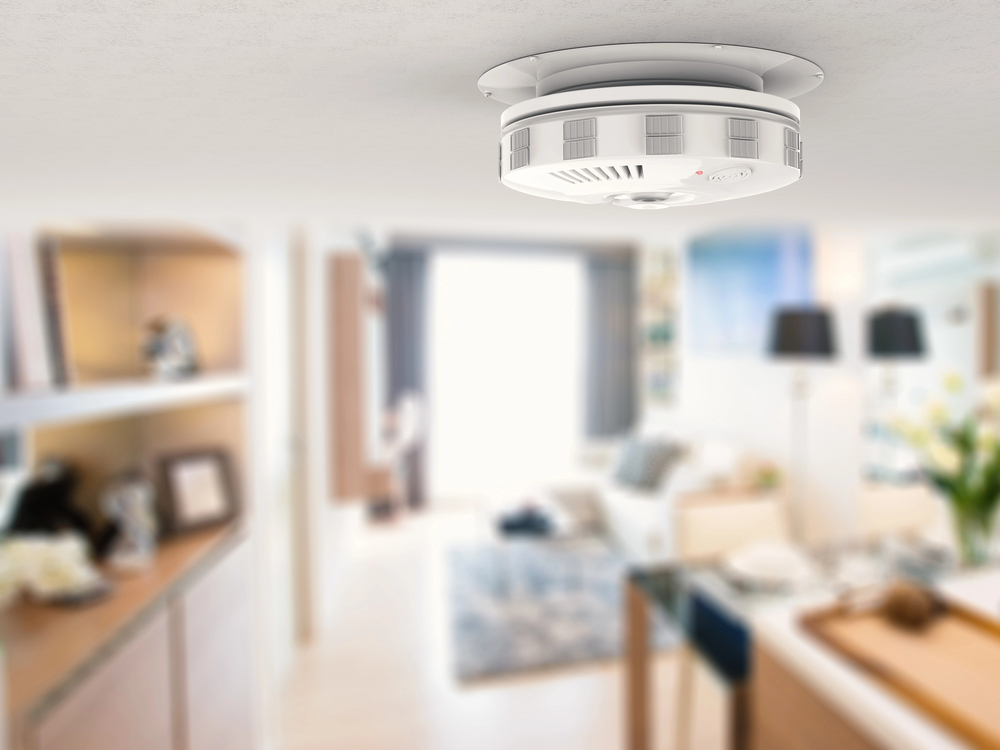

We may earn revenue from the products available on this page and participate in affiliate programs. Learn More ›
What You Need to Know
- To keep a home safe from fire, consider installing a monitored home security system with smoke and carbon monoxide detectors.
- Additionally, it’s vital to keep up with smoke alarm maintenance.
- Other ways to practice fire safety include buying a fire extinguisher, a fire-retardant blanket, and a fire sprinkler system.
- To prepare for the worst, make sure you have a fire escape plan, and always practice fire safety.
Having a firm grasp on home fire safety and fire prevention can be the difference between a serious emergency and a harmless scare. According to the U.S. Fire Administration, over 350,000 house fires occur annually. For those who don’t have the basic skills to mitigate fires, excessive flames in the fireplace or a pan on the stove that overheats could turn into something much more serious.
“Fires commonly originate in the kitchen or living areas where flammable items are used,” explains Andy Bozzo, Contra Costa County, California, battalion chief and co-founder of Tablet Command, an incident response and management software company in San Rafael, California. “The most common causes of house fires are overloaded power strips or improperly used electrical equipment that can cause overheating and lead to fire starts. Careless cooking practices and improper disposal or storage of flammable materials are also common causes of fires.”
Thankfully, there are a handful of easy things all residents can do to improve their fire safety and eliminate common causes of house fires. From checking on smoke alarms and buying a fire extinguisher to setting fire escape plans and buying a fire-retardant blanket, here are seven essential home fire safety tips to consider.
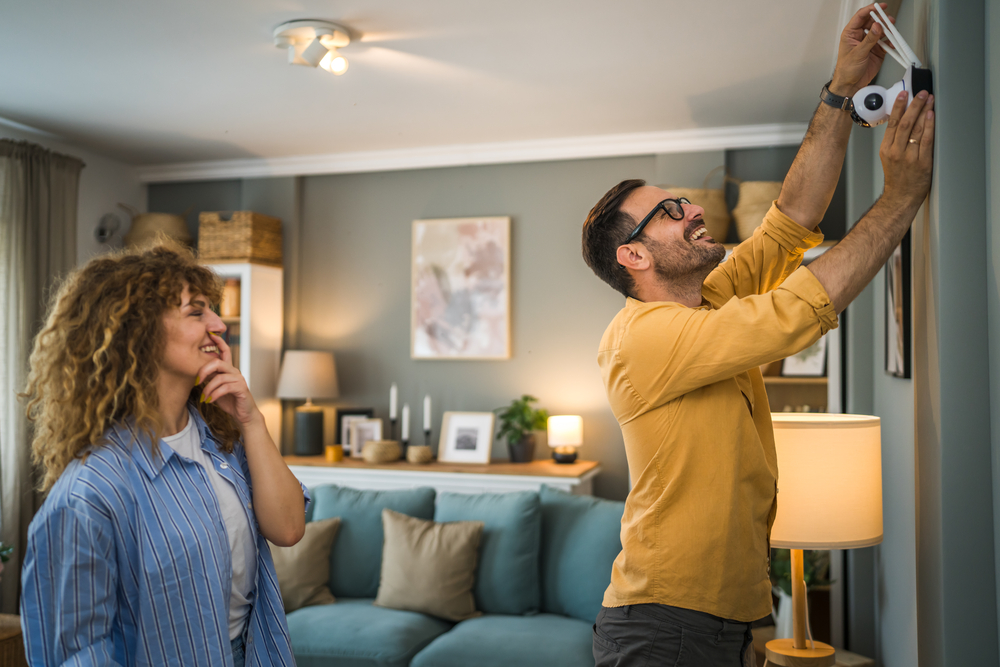
1. Install a home security system.
Adding one of the best security systems (such as a system from Vivint or ADT) to a property is always a wise decision, as it helps keep burglars away and safeguards valuables. However, many home security systems can also be bundled with devices like fire, smoke, and carbon monoxide detectors, which are vital components in a fire safety system. “Make sure you have functioning smoke detectors; ideally you want these in sleeping quarters and/or common escape areas like hallways and living rooms,” advises Bozzo.
Some home security companies offer unique fire-safety devices. Vivint, for example, offers the Smoke & CO Combo Detector that checks for both smoke or carbon monoxide, making it a valuable addition to any security setup. To best protect a home from fire, these will need to be installed on every level of the house. They shouldn’t be installed directly near sources of smoke (like a fireplace or in the kitchen), but they shouldn’t be so far away that they can’t detect when a fire has started. Ideally, installing these devices about 20 feet from these sources is a good rule of thumb.
Customers will want to consider signing up for a professional monitoring plan with their home security company. Professional monitoring provides additional security against break-ins, fires, and carbon monoxide (CO) leaks. If a smoke or CO alarm is triggered, the professional monitoring service will contact the customer, and if necessary, the authorities. This can ensure help gets to the home during a fire faster than if the home didn’t have a monitored home security system.
“The main benefit of a home security system is early detection and evacuation of occupants,” explains Bozzo. “When fire-alerting systems function correctly, occupants have a much better chance of escaping the home before fire conditions grow beyond anything that [can’t be contained].”
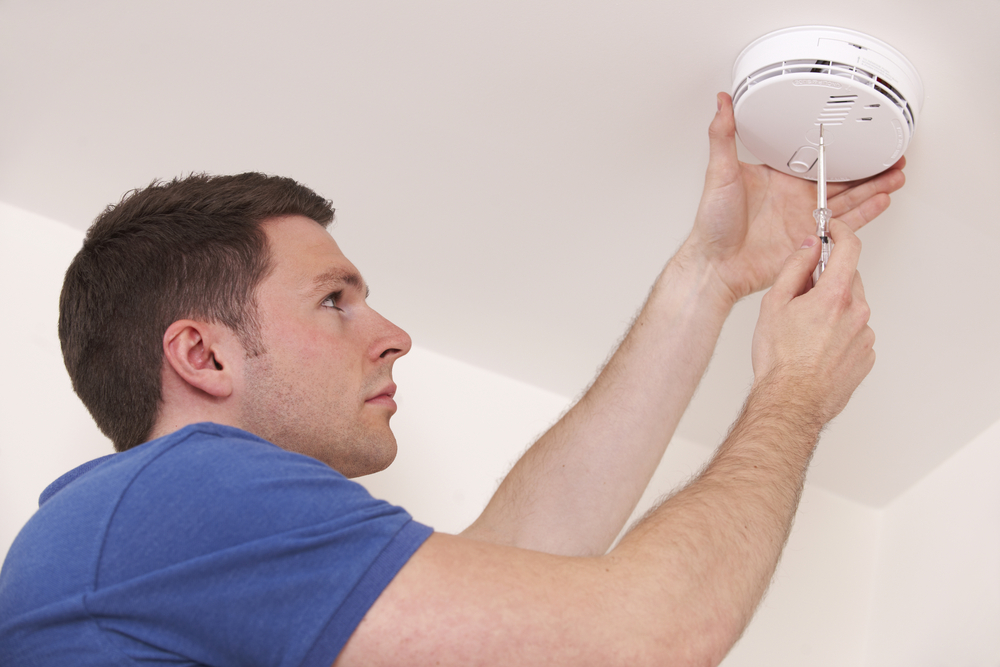
2. Keep up with smoke alarm maintenance.
Smoke alarms can go months without any maintenance, which makes them easy to forget about. But unless users are diligent with testing and upkeep, those smoke alarms may not be in any condition to detect a fire in the house. Instructions vary slightly by product, but most of these devices should have their batteries changed every 6 to 12 months. They also need to be checked monthly—most have a test button that can be pressed to set off a series of chirps, ensuring the device is functioning as intended.
If the smoke alarm fails this testing, customers can try replacing its batteries. If it still fails, then it may be time to replace the smoke alarm with a new model. Customers will want to note that alarms can be either hardwired or battery-powered, which makes it easier for them to find the best fit for their home. Hardwired models typically use batteries as a backup power source, so these will still need to be checked on the same monthly interval as battery-powered devices.
3. Purchase a fire extinguisher.
Every home needs to have at least one fire extinguisher on hand to deal with emergencies (though multiple fire extinguishers around the house are ideal). “Definitely keep fire extinguishers in the kitchen and garage, and any other place where there are flammable or combustible materials,” advises Bozzo.
As the most common location for fires to start is the kitchen, a fire extinguisher will need to be kept nearby, such as in a cabinet or closet with easy access. Along with having one in the home, the home’s residents need to be properly trained on how to use a fire extinguisher since they are slightly more complicated than most users first realize. The basics include pulling the safety pin, aiming the nozzle at the base of the fire, and sweeping the nozzle to effectively blanket the flames. Users will want to keep a close eye on their fire extinguisher, as it will likely need to be replaced every few years. Most will last for about a decade before running into issues, so it’s easy for residents to forget about them if they’re not routinely checking them. It’s recommended to check the fire extinguisher at the same time as the smoke alarm to ensure the whole system is ready for action when needed.
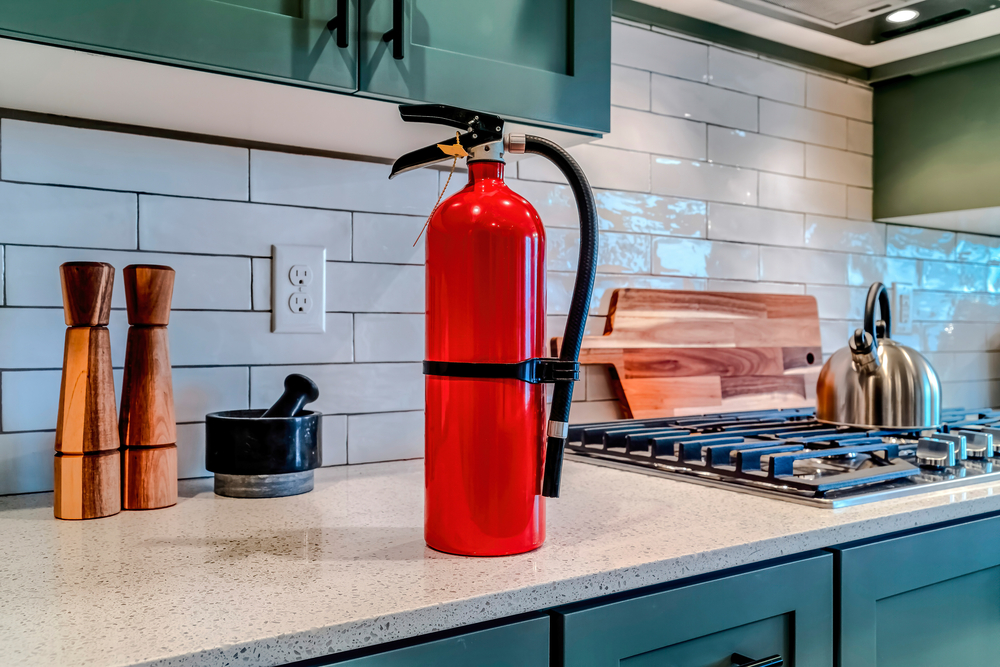
4. Get a fire-retardant blanket.
Along with one of the best fire extinguishers, a fire blanket is one of the many household items that could save lives. Fire-retardant blankets can be used to suppress most types of fires, giving users a simple way to put out flames if the extinguisher runs out of juice or doesn’t fully douse the area. Fire-retardant blankets can also be wrapped around a person to help them escape from a fire relatively unscathed, making them a versatile tool for all types of emergencies. These blankets are relatively cheap and can be placed in key locations throughout a home, ensuring they’re on hand when the need arises.
Unlike fire extinguishers, fire blankets are fairly simple to use. They can either be wrapped around an individual moving through flames, thrown on top of a fire to smother it, or placed on someone whose clothing has caught on fire. In most instances, placing the blanket on a fire will put it out in a matter of seconds, though it will need to be kept in place much longer to ensure the object has cooled. While looking for a fire blanket, it’s a good idea for a shopper to also read up on bedding and mattress fire safety to see if upgrading these items is a worthwhile endeavor.
5. Consider installing a fire sprinkler system.
There are many factors to consider before making a final decision, but installing a fire sprinkler system is a great option for many homes. Those living in condo communities, apartment complexes, or other multifamily arrangements might already benefit from perks like a fire escape or sprinkler system. And while single-family homes likely don’t need fire escapes, they can make use of sprinkler systems to improve their fire safety measures. A residential fire sprinkler system runs throughout an entire home and activates when fire is present, spouting water to put out any flames. These types of systems can be challenging to install and fire sprinkler system costs can be quite high, though most professional companies walk buyers through all steps in the process.
Factors to consider include home size, pipe material, sprinkler head type, cost, and geographic location. Permitting and inspections are both a key part of the installation process, though these will vary by location and may be handled directly by the company performing the installation.
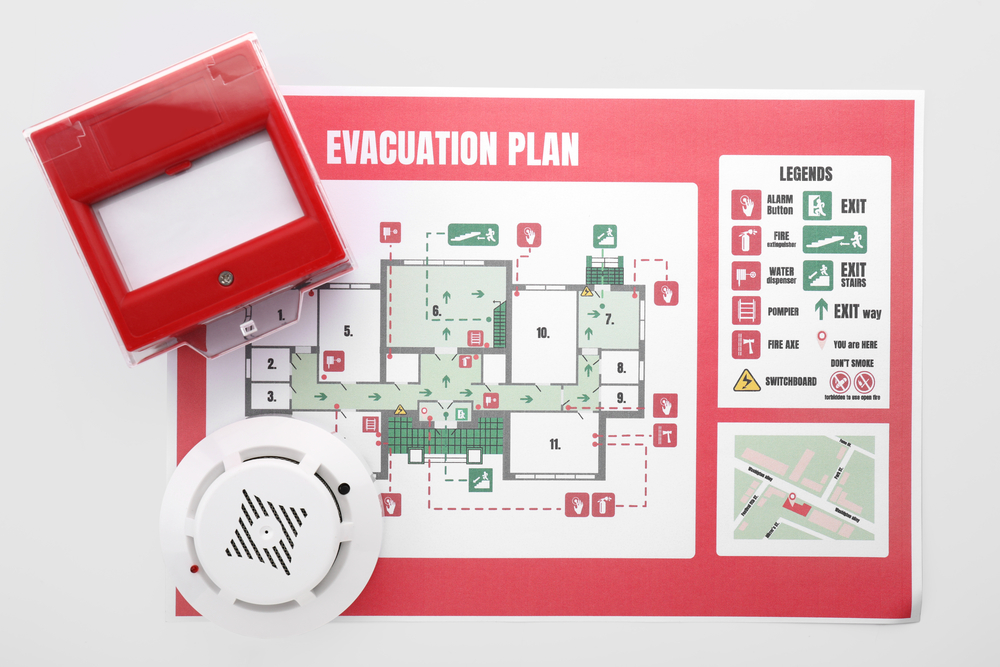
6. Make a fire escape plan.
Regardless of housing type or size, having fire escape plans or evacuation plans are great ways for the home’s residents to keep safe during an emergency. Those living in single-family homes will likely have access to a front door, a back door, and possibly a garage—offering plenty of escape routes should a fire occur. However, it’s important for residents to consider that depending on the fire’s location, it could block certain emergency exits or a stairwell if the home has multiple floors. Because of this, those who live in homes with two floors may want to invest in one of the best fire escape ladders, allowing them to quickly evacuate the building no matter where the fire is located.
“With today’s highly flammable home contents, occupants should focus on early escape rather than extinguishing the fire,” recommends Bozzo.
Fire evacuation plans for townhomes, apartments, or condominiums can vary dramatically depending on the building type and overall environment. Those living in a high-rise building will want to look for staircases on their floor and understand how to access exterior fire escape ladders. Those living in units with few doors leading outside will want to consider which windows are viable exit points. Once fire exits have been identified, residents will want to ensure everyone living in the home understands what to do in case of an emergency to ensure everyone knows what to do in the event of a fire. Evacuation for fires needs to be quick and simple, allowing all residents to easily leave the building without requiring in-depth thinking or coordination in the middle of a stressful situation.
7. Practice fire safety.
While a home’s residents can do a lot to help themselves if a fire emergency occurs, the best course of action is to simply prevent fires from happening in the first place. To this end, practicing safety and fire prevention is invaluable. There are several ways to incorporate fire prevention tips into a daily routine, including staying in the kitchen while cooking, being mindful of candles and space heaters, practicing fire pit safety, or simply replacing frayed power cords. It’s also a good idea for users to read through the instruction manual of any appliance that generates heat or uses electricity to ensure it’s being used correctly. Improper usage (especially of space heaters) can increase the risk of starting a fire. A fire safety plan can list the measures residents can take to keep their home safe.
Bozzo suggests some simple measures residents can take to mitigate the risk of a house fire. “First off, have good cooking discipline,” he says. “Limit distractions and have a plan if oils or other cooking ingredients catch fire. Second, make sure that when participating in activities like home automotive maintenance or using chemicals for cleaning or painting, have a good practice for disposal and containment, and know which materials are flammable and need extra attention. An improperly disposed oily rag can cause a fire that extends well into the living spaces.”
The National Fire Protection Association is a great safety resource, as it provides tips for using devices with lithium batteries, ways to improve the safety of electrical sockets, and how to prevent clothes dryers from turning into a fire hazard. Users can even find tips on how to teach fire safety skills to children, making it a one-stop shop for all fire safety needs. In short, it’s an ideal destination for all sorts of fire prevention safety tips.
“A fire safety plan evaluates all areas in your home where fire is a risk,” says Bozzo. “The kitchen and outdoor cooking areas, garage, and trash cans are all areas that pose fire risk. Fire-safe practices with flammables and cooking materials, as well as an escape and meeting plan outside the home, are all important components of the fire safety plan.”
Home fire safety is a topic for everyone to consider, whether they live in their own home or in a rented apartment. By taking several fire safety measures, residents can ensure they have a solid plan in place in case a fire breaks out—and know how to be safe around the home to prevent fires in the first place.
